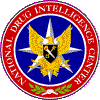
|
National Drug Intelligence
Center North Florida High Intensity Drug Trafficking Area Drug Market Analysis June 2007 AbuseMarijuana is the most widely abused illicit drug in the North Florida HIDTA region; however, the direst drug-related societal and personal consequences are associated with powder and crack cocaine. According to the Florida Department of Law Enforcement (FDLE) Medical Examiner's Commission (MEC), 817 drug deaths3 occurred in the areas of Gainesville, Jacksonville, and St. Augustine in 2005 (the latest year for which data are available). Cocaine-related deaths (267) accounted for the highest percentage of deaths.4 Moreover, data from the Treatment Episode Data Set (TEDS) indicate that cocaine was the second most identified drug of abuse in admissions to publicly funded treatment centers in Florida in 2005 (the latest year for which data are available). (See Table 4.)
The widespread diversion and abuse of pharmaceutical drugs are a significant and rapidly growing drug threat in the North Florida HIDTA region. The most commonly abused pharmaceuticals are prescription narcotics such as oxycodone, hydrocodone, and methadone, and benzodiazepines such as diazepam (Valium) and alprazolam (Xanax). According to the FDLE MEC, when all pharmaceutical drugs that were mentioned in connection with a death, either alone or in combination with other drugs, are combined as a class, they account for over one-half of all drug deaths in the region during 2005 (the latest year for which data are available). (See Table 5.) Further, law enforcement and drug treatment officials in the region report that the average age of prescription drug abusers and distributors is decreasing. In most cases prescription drug abusers in the North Florida HIDTA region purchase prescription drugs over the Internet and visit unscrupulous physicians to obtain multiple illegal prescriptions for pharmaceutical drugs; in some cases unethical physicians cater to abusers and intentionally overprescribe pharmaceuticals for personal profit.
The abuse of high-potency ice methamphetamine is limited but increasing in the HIDTA region. Rapid increases in abuse of the drug quite likely have been slowed by an abundant supply of powder and crack cocaine, particularly in Jacksonville. High levels of availability of powder and crack cocaine together with consistently low prices contribute to reluctance on the part of abusers to experiment with or switch to ice methamphetamine. Heroin abuse is limited in the North Florida HIDTA region. Only five deaths in the region were associated with heroin abuse in 2005, according to the FDLE MEC; however, the low death rate may possibly be attributed to first-response protocols applied by emergency medical service (EMS) respondents, not to a lack of or decrease in abuse. When responding to a heroin-related incident, EMS responders often employ a first-response application of Narcan (naloxone), also marketed as Nalone and Narcanti, an injectable narcotic antagonist that immediately reverses respiratory arrest caused by a heroin or other opiate overdose. End Notes3. Drug deaths include
both drug-induced deaths (drugs directly caused death) and drug-related
deaths (drugs contributed to death). |